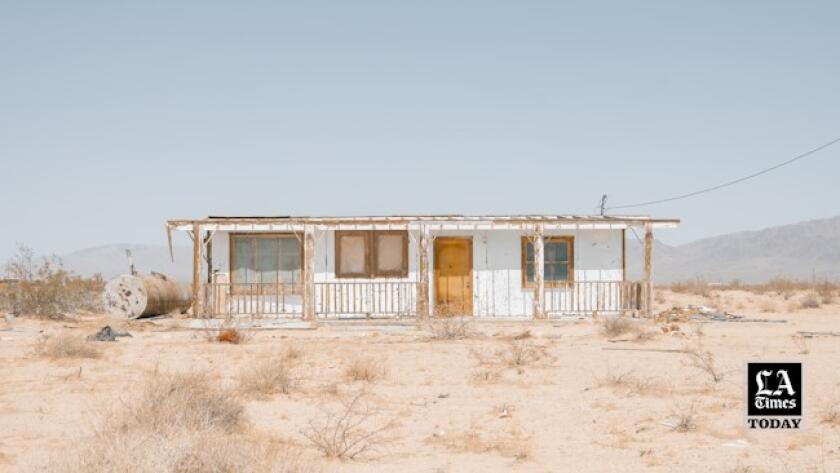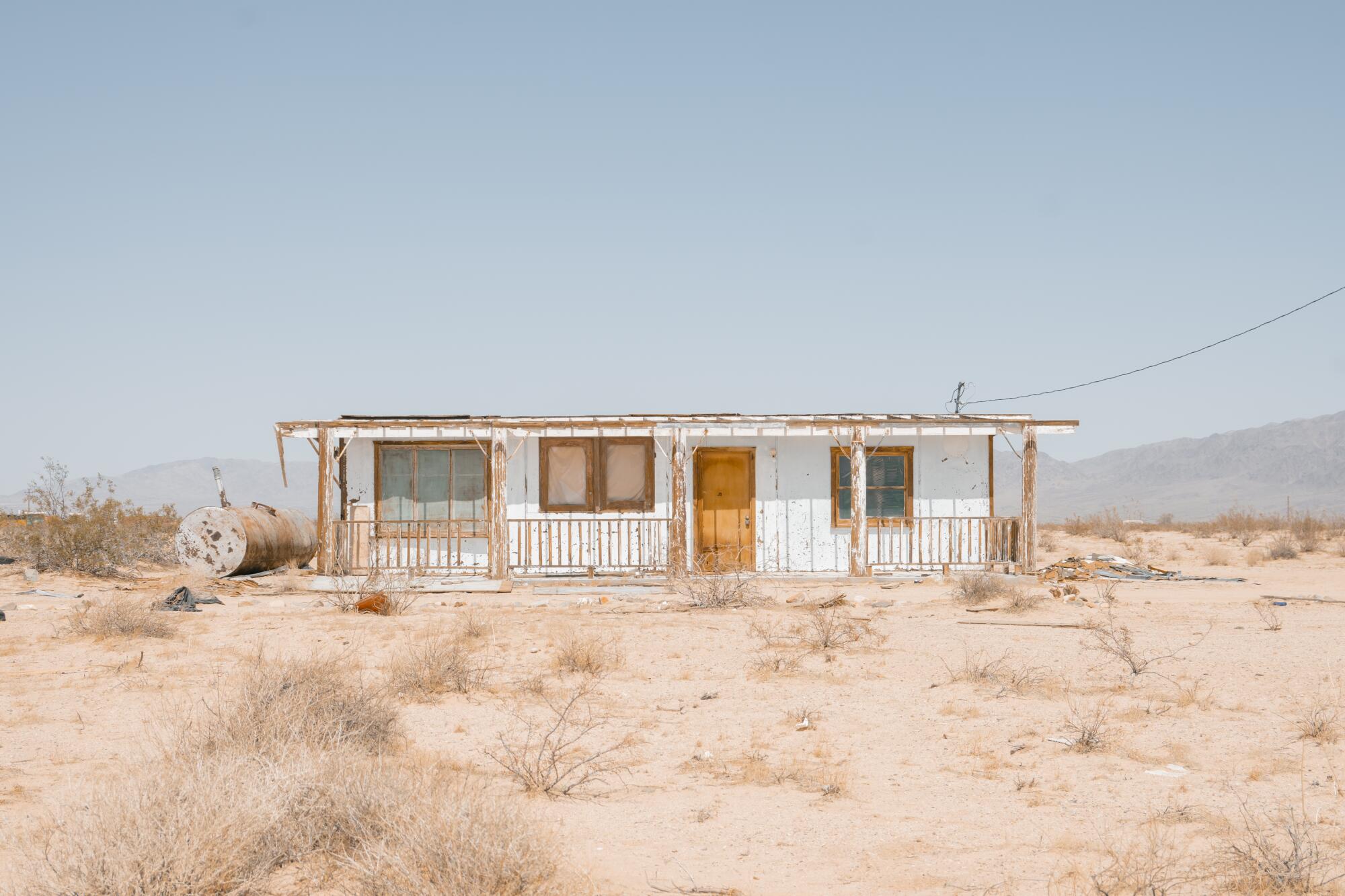
- Share via
WONDER VALLEY, Calif. — Helin Bereket spent hours driving her rental car down the dusty roads just east of Twentynine Palms earlier this year, photographing the abandoned homesteads that littered the desert landscape. The Berlin-based photographer had read online about the forgotten shacks filled with shriveled reminders that they were once homes decades ago.
Many of the homesteads were built in the 1950s as part of the Small Tracts Act, a popular federal program that awarded five-acre parcels to people who agreed to build homes on the property. Today, the abandoned shacks are as much a part of the desert as the creosote bushes that dot the land.
As her lens captured the dilapidated exteriors that the desert seemed intent on swallowing, Bereket said she was left with a nagging curiosity about who would relinquish these time capsules in the remote, unincorporated community of Wonder Valley.
I know the answer.
Bereket’s image of a crumbling sky blue structure with wood-trimmed windows on Raymond Drive, featured in an online magazine in June, was my childhood home.
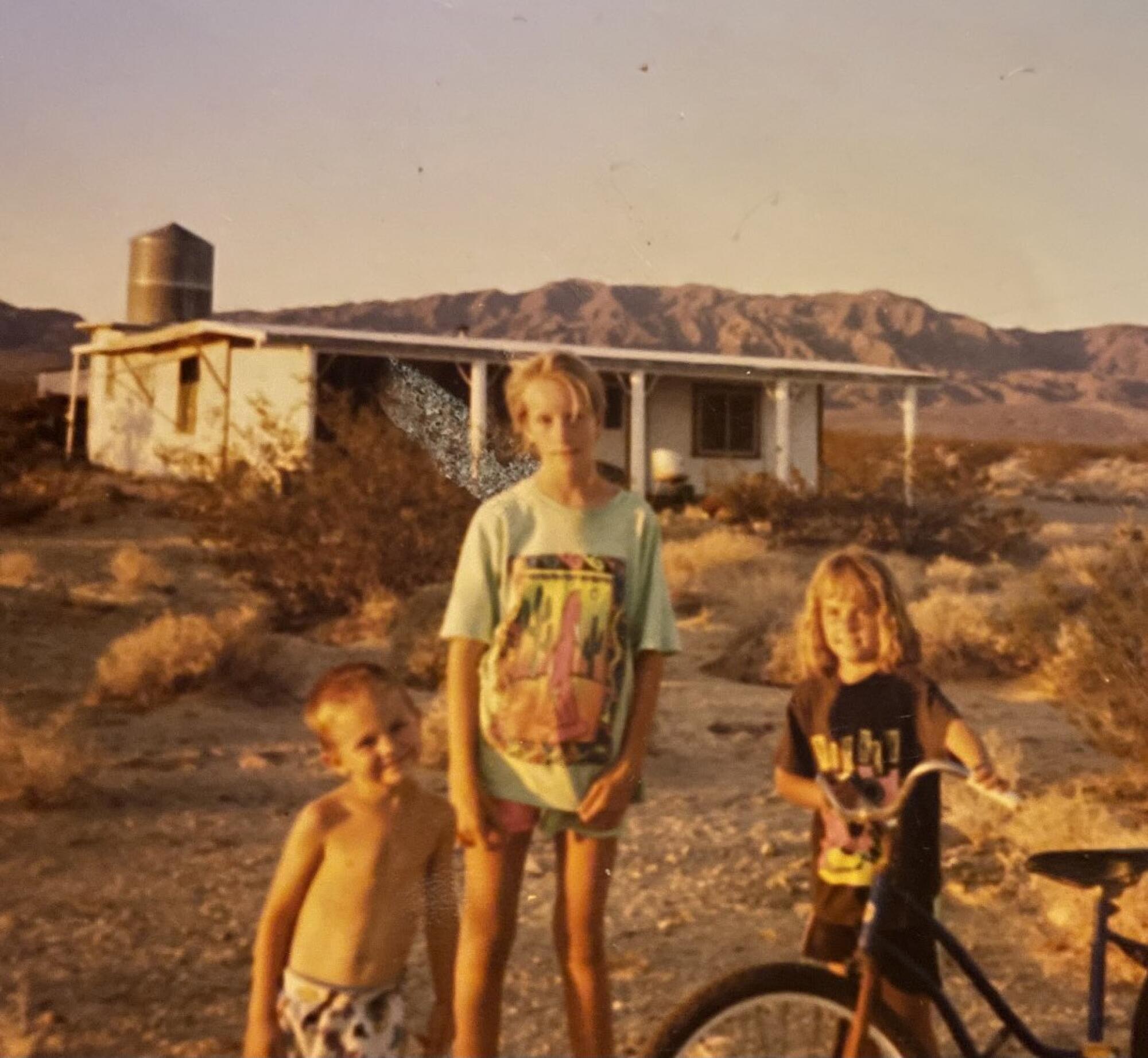
As a kid in the 1990s, I wandered this desert freely, catching iguanas when I couldn’t find horny toads. I shared Bereket’s curiosity when I peered inside some of the abandoned homesteads, using a Pentax camera to capture the way shoes curl into themselves over time or the way a steel pot was still carefully placed next to a long dry sink as if it had been washed yesterday. I invented stories about the people who lived there and why they left.
Now, 25 years later, Bereket was peering into my former life.
“I actually wanted to go inside, but I didn’t have that much time because there were so many houses and some of them were not empty,” she said when I reached out to her after seeing the image of my childhood home.
My parents bought the 714-square-foot house with its two bedrooms and single bathroom for $19,000 in 1990. I was almost 9 years old. They believed that leaving Upland for a small remote town would sever the pull of gangs and drugs that kneecapped the future of those around them. Twentynine Palms was a place where the mayor coached the high school softball team. A place where homeownership was possible for two high school dropouts starting over with three kids.
After several weeks of camping in the summer heat while waiting to move in, we finally got the keys for the house on Raymond Drive.
My parents purchased it using risky alternative financing, signing a contract that would now be considered a predatory loan, but that was one of the few options available for 20-somethings with few assets. The first night in that house, we perched lawn chairs on the flat roof and stared at the night sky in awe of what city lights had long obscured.
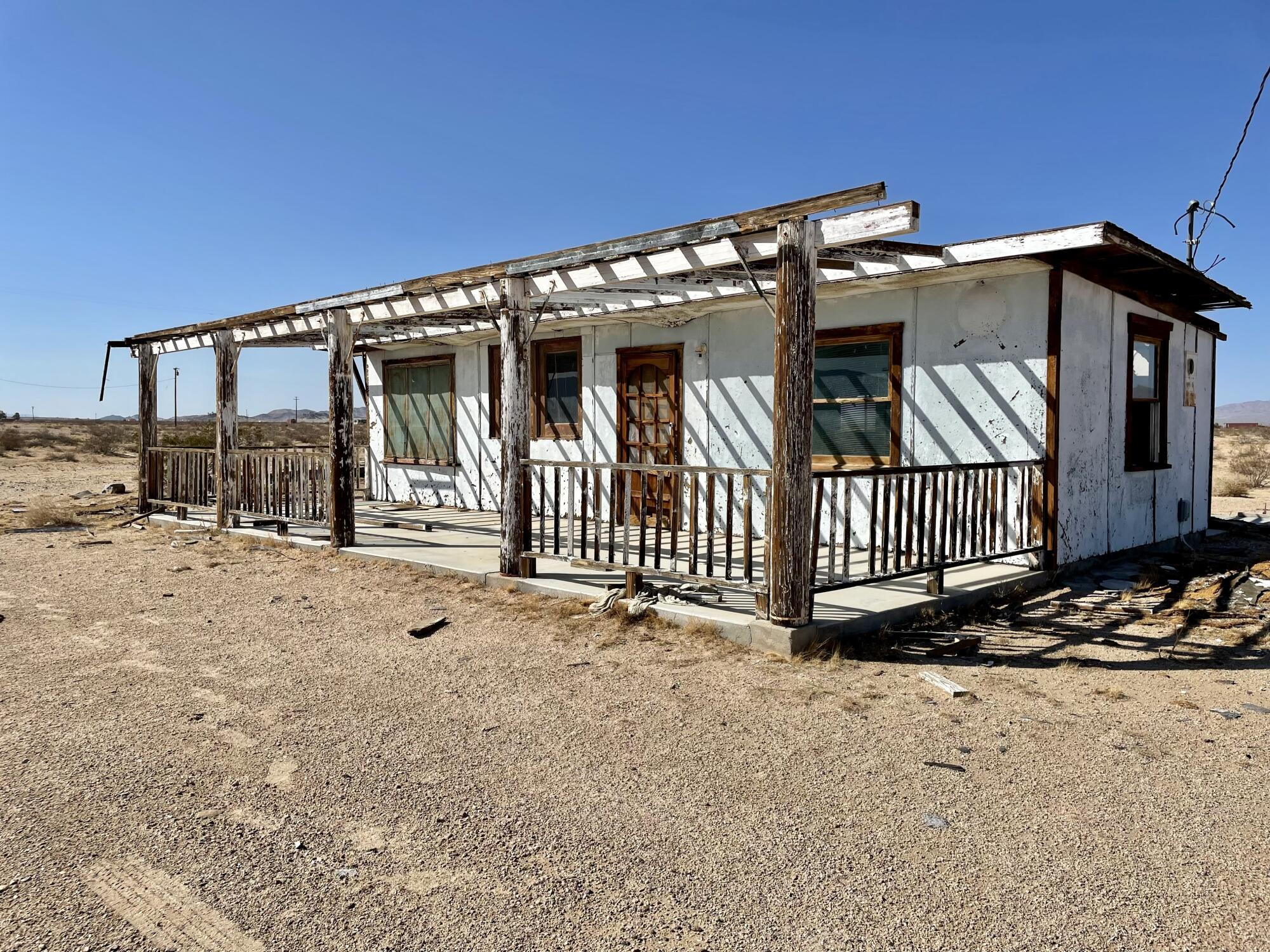
The five acres of land around the home was ours, but with few occupied properties nearby, the vast desert felt as though it was all mine.
We quickly learned the lessons desert dwellers know all too well: that bumpy dirt roads slowly dismantle cars, that dust devils create whirlwinds capable of breaking windows and that removing an oddly placed sand berm for aesthetic reasons will bring the water from flash floods to your front door.
When I once commented about neighbors who were poor, my dad quickly corrected me. We were no different. We were poor too.
Even earthquakes are different in the desert. You hear them first, like a freight train announcing its arrival.
But before we figured out how to navigate the land of little rain, we realized that our house was missing something absolutely critical: a well. Instead, our home had an 800-gallon water tank perched on the roof. It cost $40 to fill and needed to last us two weeks. There wasn’t always money to refill it when it was running low, so flushing was judicious and showers were short.
In the weeks after we moved in, my younger brother and I caught small snakes with a stick and a mason jar, and brought them home to my horrified parents, who told us that the nubs on their tails would grow to be rattles. We learned the difference between a sun spider and scorpion and, despite my certainty, the sting from the latter hurts but is rarely deadly.
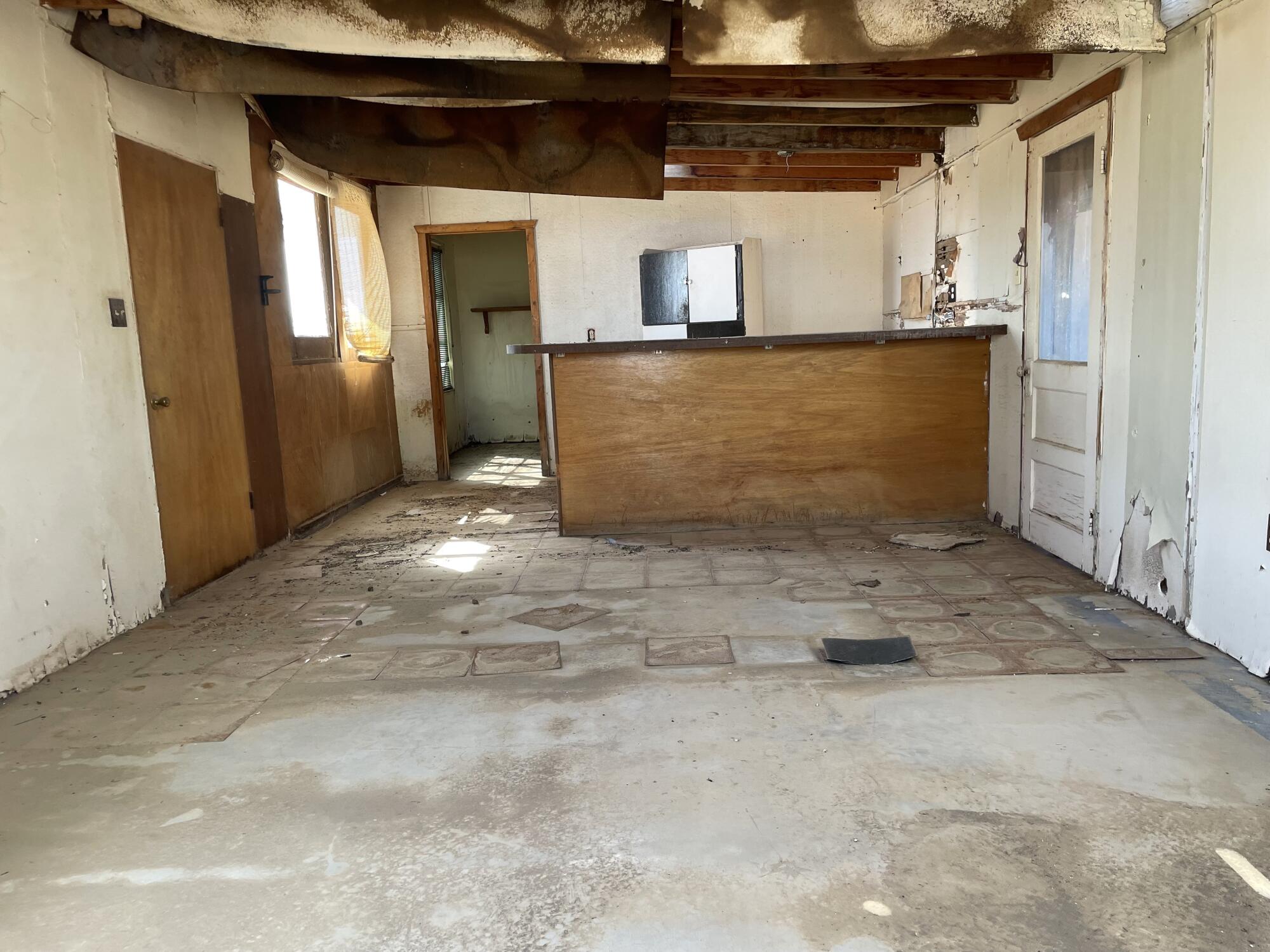
Our small ranch-style home, which was built in 1965, was half a mile from the school bus stop. I know this only because I recently asked my mom about it; my childhood memories had it closer to three miles, or maybe 20 miles, but perhaps that’s what the walk felt like in the arid afternoon heat. The ride to school in Twentynine Palms was some 35 minutes, with our bus hauling some of the area’s poorest kids.
For a while I thought I was an exception. My parents had opened a sign-painting business, and we had learned to navigate desert life. When I once commented about neighbors who were poor, my dad quickly corrected me. We were no different. We were poor too.
But as long as we had the house on Raymond Drive, I didn’t think that was true.
The loan went bad in 1997 over a dispute about contract language. Our only recourse was to walk away before we were evicted. I was in high school, and the anxiety of that time while we searched for a place to live, never sure whether someone would show up to kick us out, is my foremost memory of that home.
We ended up moving to a house three miles away, down a different dirt road slightly closer to town. Despite the proximity of the two homes, I had no interest in returning to Raymond Drive, blaming the house for abandoning us.
Last year, nearly 25 years after we last drove down that road, I was in Wonder Valley visiting my parents, and I had a sudden desire to look at my childhood home. My mom joined me as we made the short trek to Raymond Drive, where we assumed someone would be living.
It was barely standing.
The sky blue house with the wood-trimmed windows now looked worse than the surrounding homesteads, many of which have been reclaimed by the gentrification that has transformed Wonder Valley and nearby Joshua Tree into trendy destinations with abundant short-term rentals. Skyrocketing real estate prices have made housing here unattainable for many of the residents who have weathered this desert for decades.
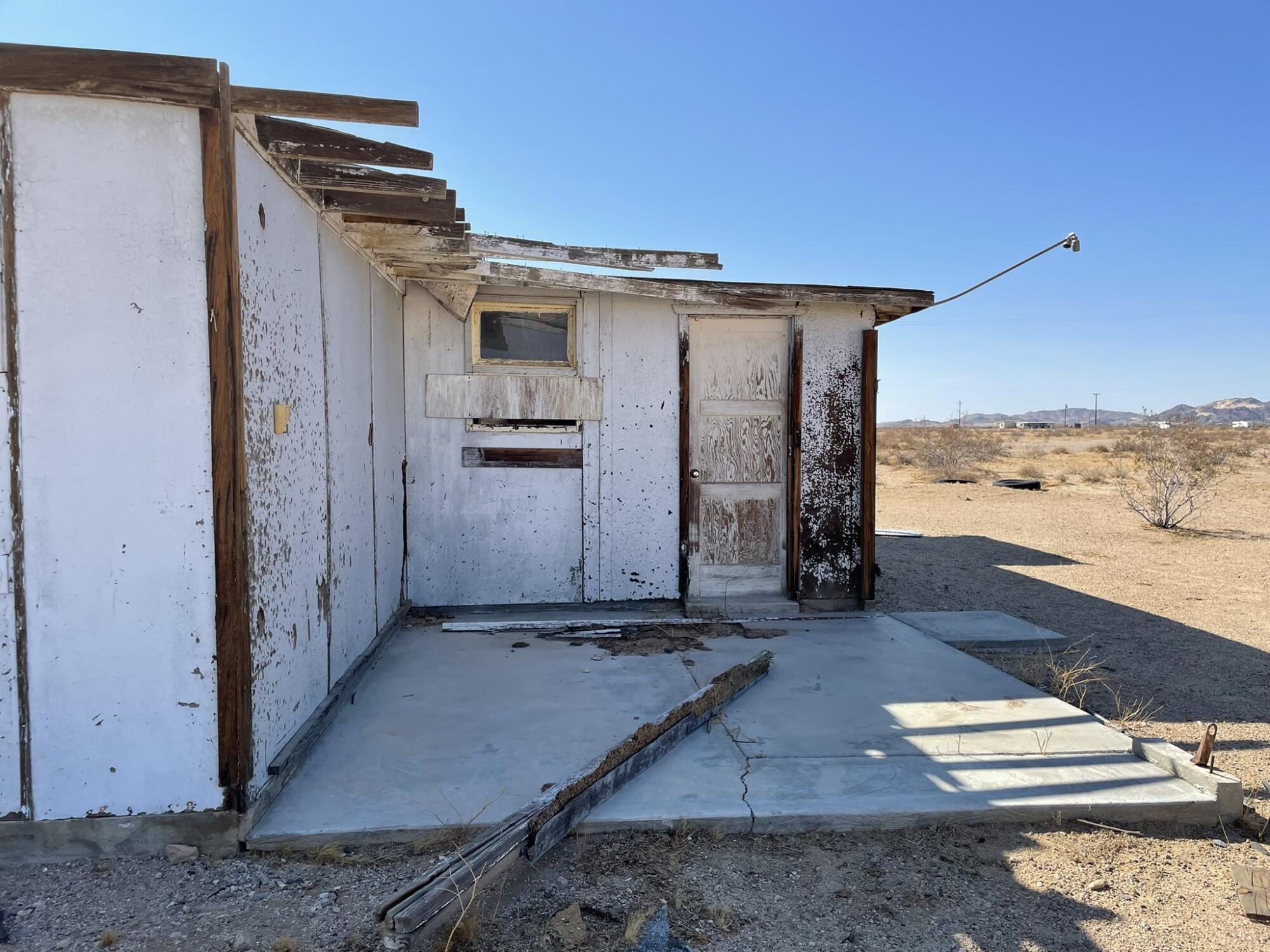
We entered the house through a large exterior hole in what used to be the closet of the room I shared with my siblings, and I stood there, cellphone camera in hand, staring in disbelief at the remnants of my past.
The home was even smaller than I remembered; the ceilings lower.
Amid the dirt and debris inside my old bedroom I spotted my Barbie doll, a hand-me-down from my mom discarded by my teenage self when we moved. The crocheted dress my grandmother made for her was yellowed with age. The linoleum flooring we’d laid in the living room had peeled and cracked below a roof threatening to surrender to the fierce heat and wind. We spotted a sign my dad painted and a bucket we used to fill the swamp cooler with water; our blinds were still hanging in the window. The house had been vandalized, but it appeared no one had lived here since we left.
Our names are still carved into the concrete we poured on the front patio. The railing my parents built is now the most sturdy part of the home, which still had a black padlock on the front door despite the large hole in the back siding. The water tank is missing from the roof.
My mom’s shocked silence was punctuated with the occasional “oh wow” when she discovered other items that were once ours. It felt as though the house had been waiting for us this whole time.
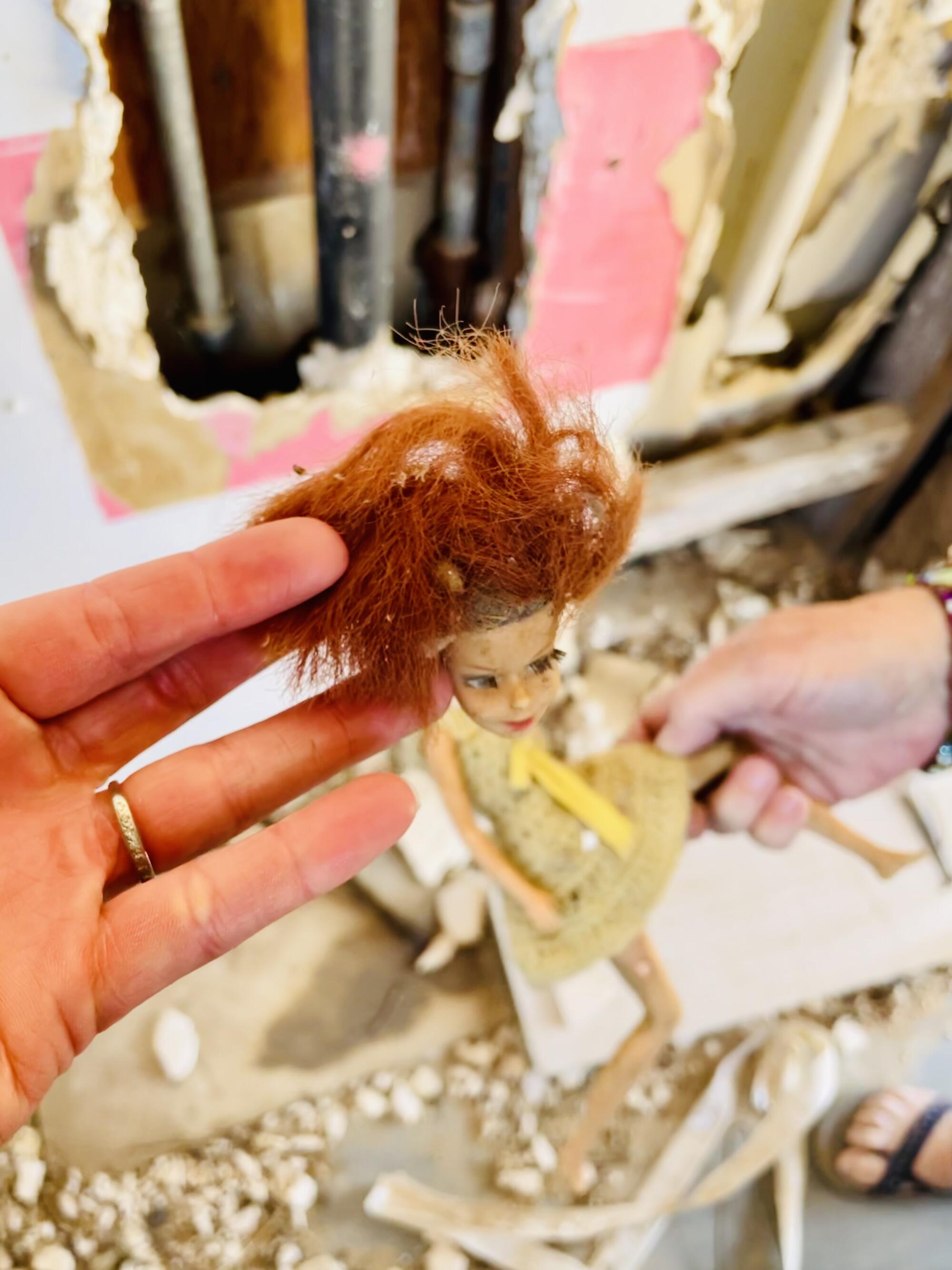
After my visit, I returned home to Sacramento, where I cover state government for The Times, and tweeted about how it felt to walk into my childhood home and realize it had been empty for all these years. Lawmakers, lobbyists and readers emailed or texted me pictures and stories of their own childhood homes. For weeks, people reached out to say the Twitter thread resonated with them, that returning to their own childhood homes was more than just a trip down memory lane. It conjured emotions they hadn’t been expecting.
It’s an experience millions of Americans seek out each year, said Jerry Burger, a retired Santa Clara University psychology professor. Burger spent more than a decade researching people who visit their childhood homes for a book titled “Returning Home: Reconnecting With Our Childhoods.”
He found that one-third of Americans older than 30 have returned to their childhood homes. His own interest in the subject stemmed from his nagging desire, as he neared his 40s, to revisit the places that served as a backdrop to his childhood.
Burger says people feel particularly strong emotions about the place they lived between the ages of 5 and 12. “It seems to be those are key years,” he said. “For many people their identity is tied up with that place, with that time.”
I know this is true for me. I showed my husband and children the photos of my childhood home, zooming in on the picture of my Barbie, her red hair a matted mess. I’d left her behind a second time.
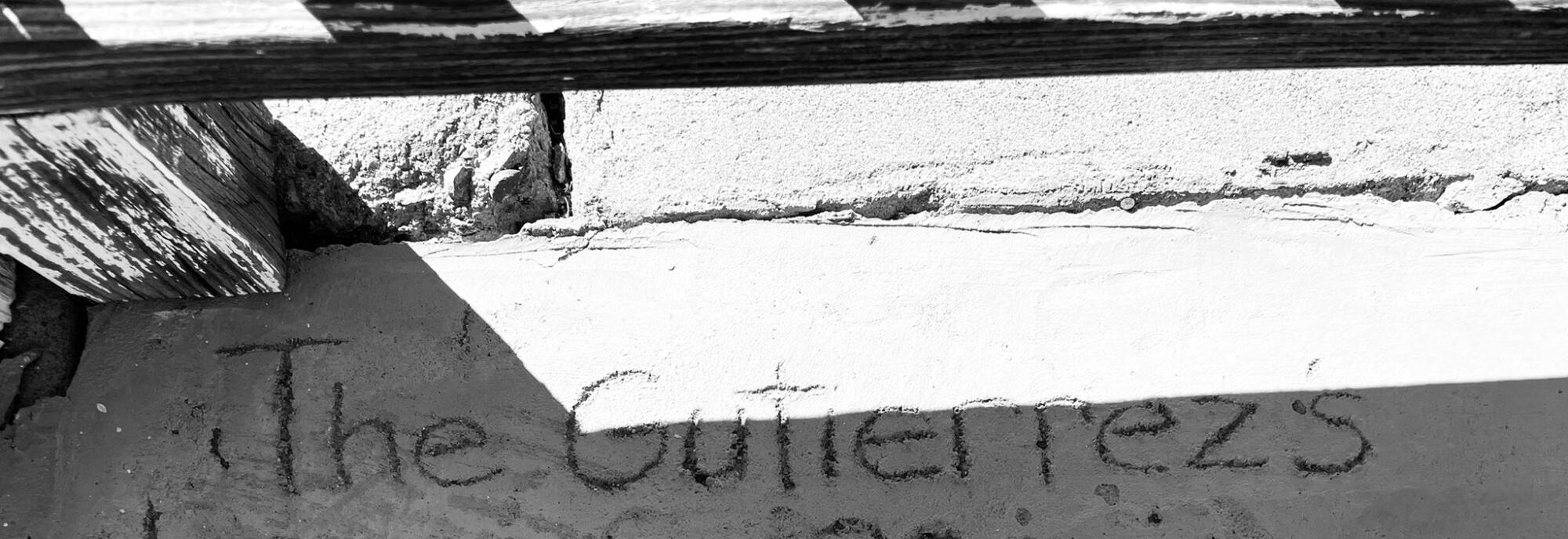
I tried to explain the layout of the bedroom I shared with my two siblings to my 6- and 12-year-old boys, telling them about the time my older sister lodged her bed in the closet so she could say she had her own room.
As I talked, I knew I wanted my preteen to see it in person.
I envisioned a kind of Hallmark movie moment inside the dilapidated home that would lead to my 12-year-old reflecting on his own middle-class privilege. My “mom brain” was allowing me to pat myself on the back for the solid parenting moment I was manufacturing even before I booked our travel.
We set out in April, our rental car bumping along the dirt road, a dust cloud following closely behind us as we headed toward Raymond Drive. When people used to ask where I lived, I would tell them, “Along the back road to Las Vegas.” Now, I regularly see stories glamorizing Wonder Valley and the eclectic lifestyle offered here.
We passed the myriad homesteads that are now rentals, boasting amenities such as outside baths called cowboy tubs, a rock climbing wall or yoga rooms. I talked about the impact it was having on locals who were being priced out of the desert, and added “gentrification” to my son’s vocabulary.
“There was nothing like that when I was here,” I told him.
As we pulled up to my childhood home, I warned him we shouldn’t enter the circular driveway my siblings and I lined with large rocks as part of our weekend chores. There could be nails or other debris, and I didn’t want to risk a flat tire.
“Wow, is that what it looked like when you lived there?” he asked.
No, I told him, looking at the way the sagging structure appeared to be frowning.
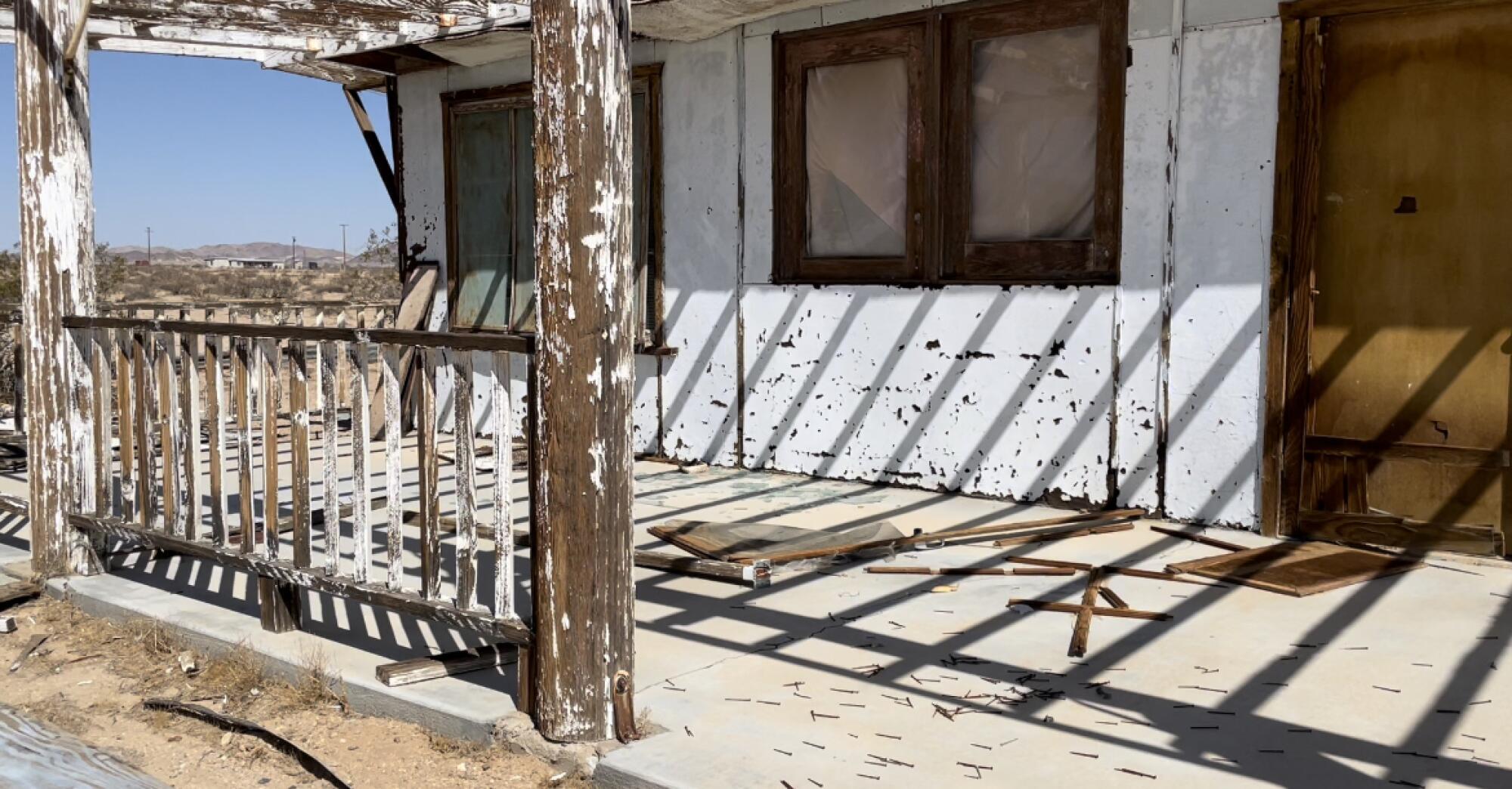
We parked on the side of the house, and as we walked up, it was clear something was different from my last visit six months earlier. There were hundreds of nails scattered on the porch and driveway, stopping us cold. Nails can act like a home alarm when there’s a reason a resident doesn’t want you around, a warning more clear than any “do not trespass” sign in the desert.
The barking dog in the house was another clue that someone was now living inside.
We left quickly, driving a quarter-mile away before I pulled over. Disappointment washed over me as I realized my pre-scripted parenting moment would not happen. My son saw the house, but he didn’t go inside; he didn’t see my name in concrete or what remains of the black and white checkered kitchen.
It could be squatters, I said.
“At least someone is living in it, right?” he responded, recalling my talk about the state’s housing crisis.
Outside, the wind pelted the car with sand as we stared at what was no longer an abandoned shack. I could see what appeared to be a swamp cooler perched in the window of what was once my parents’ bedroom. The hole in the exterior was boarded up haphazardly with plywood. There was a pile of debris outside, and I wondered whether my Barbie was in it.
I took out my phone to capture one more picture of the weathered sky blue homestead with the windows we’d trimmed in wood. Like Bereket, I was just another out-of-town passerby with a nagging curiosity about who was calling it home.
- Share via
Watch L.A. Times Today at 7 p.m. on Spectrum News 1 on Channel 1 or live stream on the Spectrum News App. Palos Verdes Peninsula and Orange County viewers can watch on Cox Systems on channel 99.
More to Read
Sign up for Essential California
The most important California stories and recommendations in your inbox every morning.
You may occasionally receive promotional content from the Los Angeles Times.
